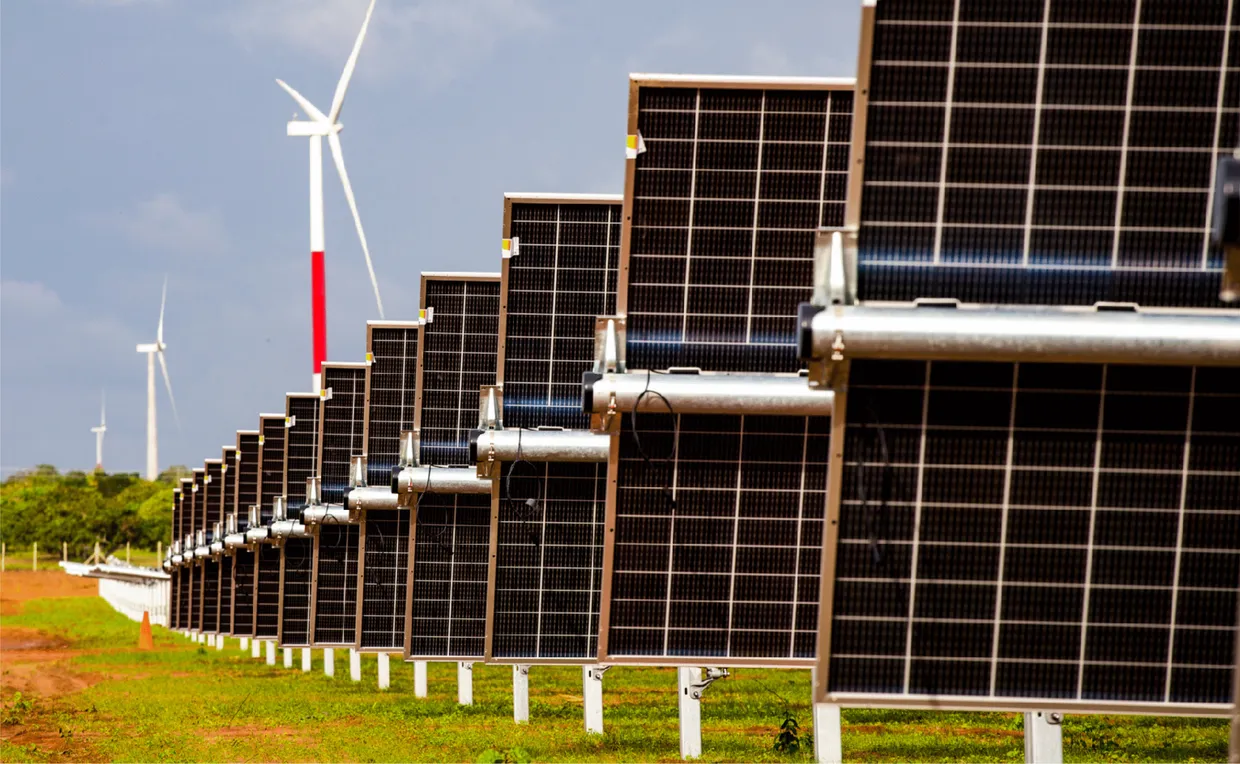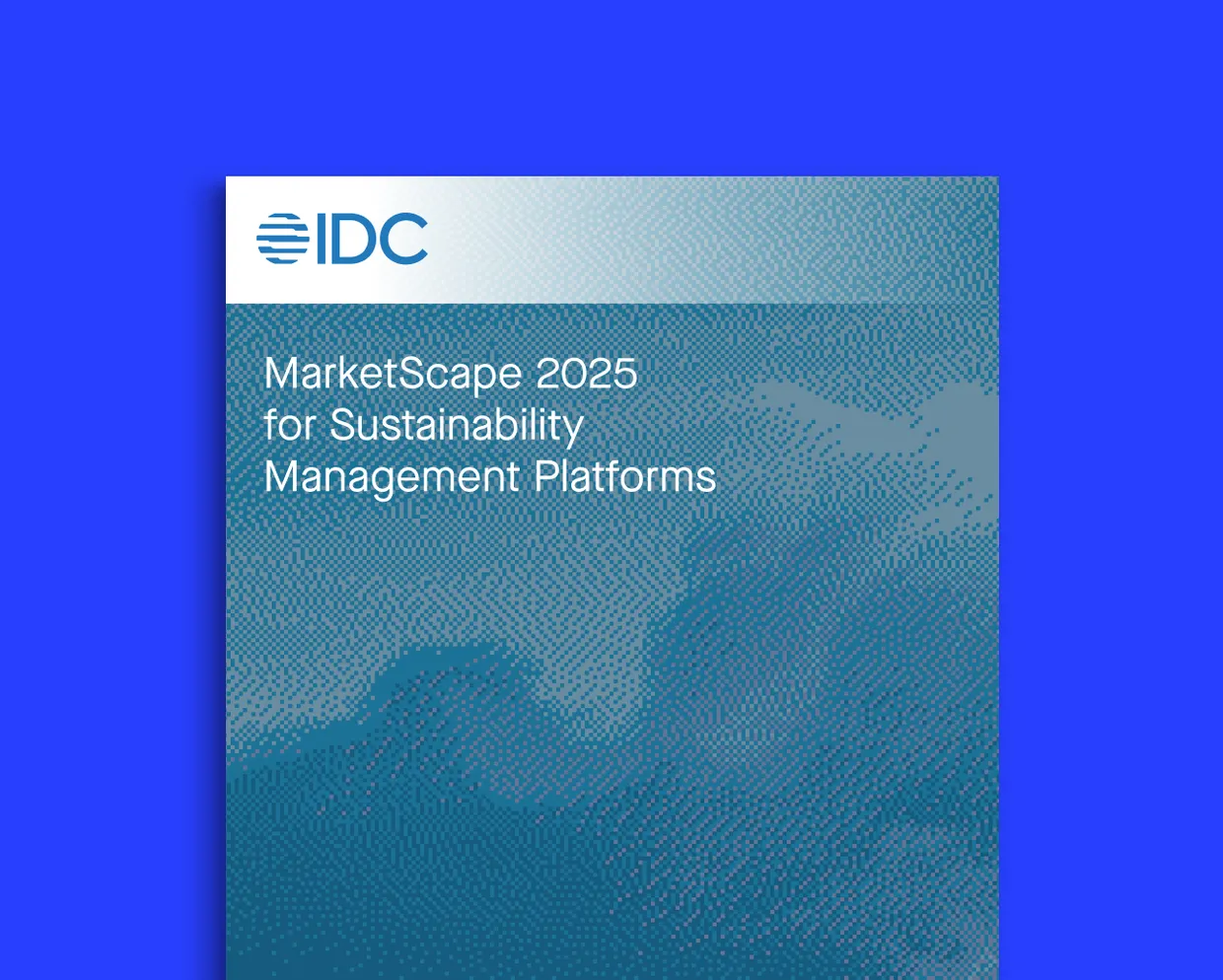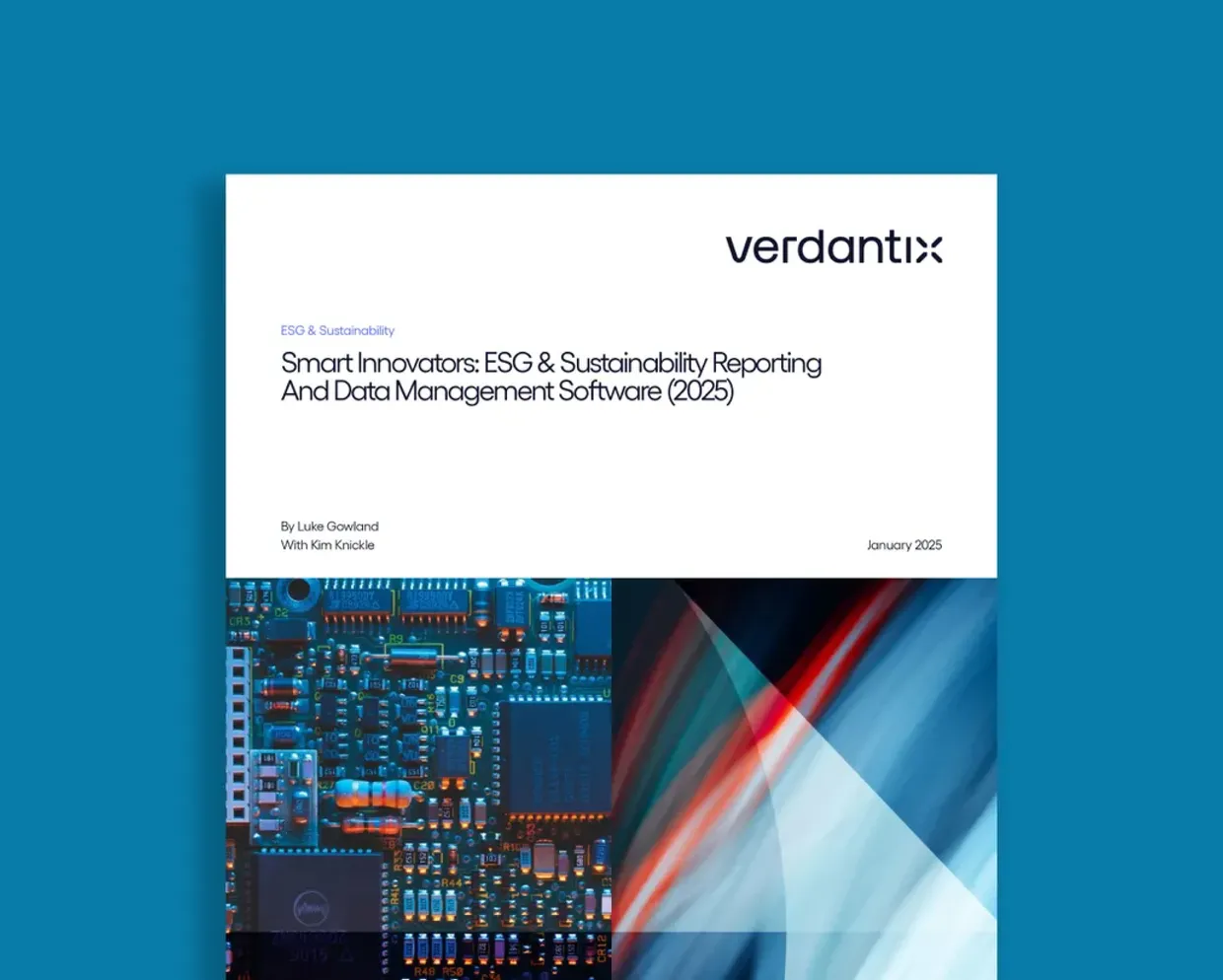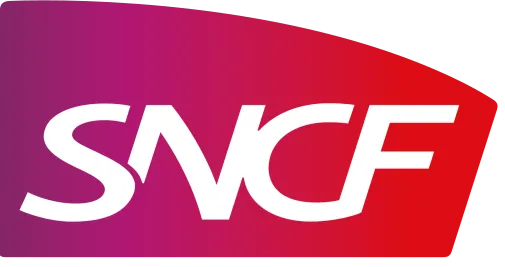| Data depth & engagement | Full GHG accounting with supplier-level Scope 3 tracking and connected supplier dashboards. | High-level carbon calculations, limited supplier engagement. |
| Regulatory coverage | Built for SB 253/SB 261, CSRD, and CDP, with audit-ready reports. | Focused on voluntary disclosure and carbon removal. |
| Collaboration tools | Integrated team and supplier workflows for shared accountability. | Relies on external coordination and manual processes. |
| Assurance readiness | Verification-ready data aligned with the GHG Protocol. | Basic exports for manual assurance review. |
| AI & scalability | Embedded AI agents for large-scale, accurate emissions management. | Limited AI automation and enterprise scalability. |
Watershed vs Sweep

Why choose Sweep
Data depth and engagement
Sweep supports full ESG and greenhouse gas (GHG) accounting, including supplier-level Scope 3 emissions tracking across complex value chains. Suppliers can input data directly, track emissions over time, and share reduction targets.
Watershed focuses mainly on carbon accounting and high-level carbon emissions calculations, with limited supplier collaboration tools.
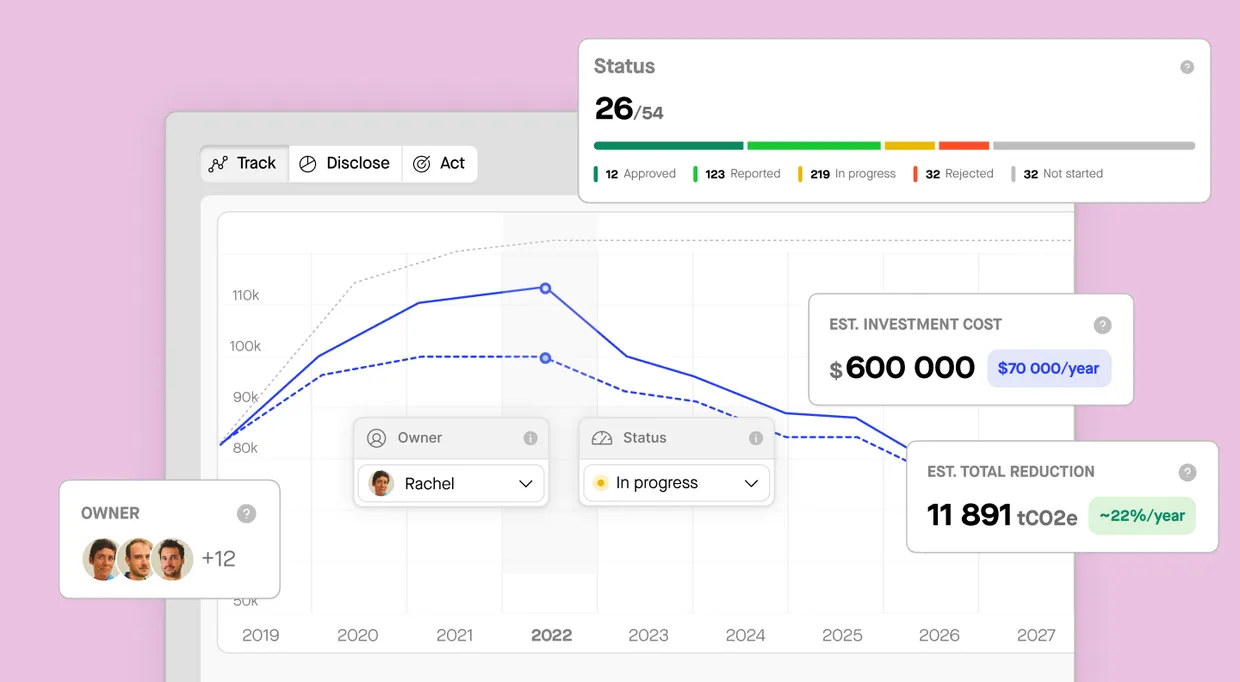
Regulatory coverage
Sweep is designed for compliance with California SB 253/SB 261, CDP, and the Corporate Sustainability Reporting Directive (CSRD).
Watershed centers on voluntary climate risk disclosure and funding carbon removal.

Collaboration tools
Sweep includes built-in supplier and team workflows to engage internal and external stakeholders.
Watershed relies on external coordination for data collection and reporting processes.

Assurance readiness
Sweep’s verification pathways prepare emissions data for third-party assurance under leading carbon accounting standards like the Greenhouse Gas Protocol.
Watershed provides exports for manual review.

AI-powered Scalability
Sweep’s AI agents are built directly into workflows, handling complex emissions data across multi-entity, multi-region organizations and deliver accurate, transparent carbon management at scale.
Watershed, by contrast, applies AI mainly for data processing and emissions estimation, with limited enterprise-scale automation or built-in workflow integration.
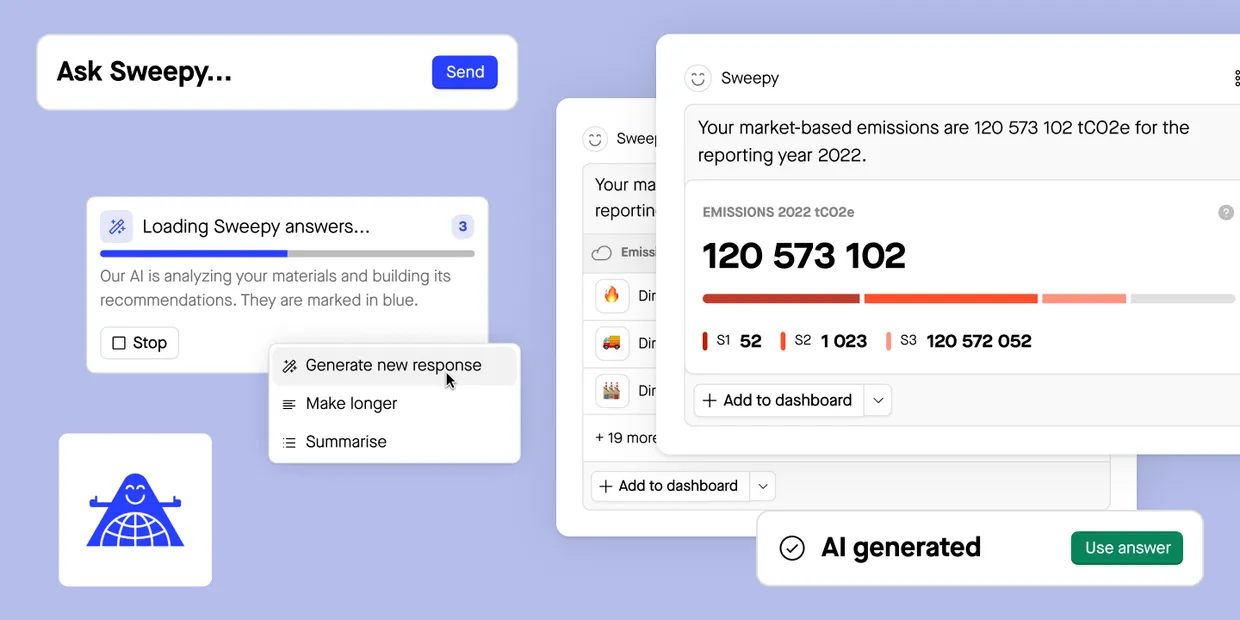
See why US companies choose Sweep
Leading companies trust Sweep to navigate their sustainability journey

Orange's technology strategy to achieve net zero by 2040
Analyst reports position Sweep as a leader
See why companies choose Sweep
Centralize your ESG data, streamline reporting processes, and deliver verifiable carbon reductions, all in one powerful platform.
FAQs: Watershed vs Sweep
What’s the difference between Watershed and Sweep?
In the Watershed vs Sweep comparison, both are leading carbon accounting software platforms, but they serve different needs. Sweep is a full carbon accounting and ESG data platform designed for both mid-size companies and enterprise-scale organizations with complex supply chains and multiple business units. It centralizes carbon data, greenhouse gas (GHG) emissions, and sustainability performance in one place, enabling accurate carbon emissions calculations, scenario analysis, and climate management.
Watershed, by contrast, focuses more on helping companies calculate emissions, implement carbon reduction strategies, and fund carbon removal. While both help measure carbon footprints and manage carbon emissions, Sweep provides deeper data collection, data analytics, and reporting processes across Scope 1, 2, and 3 emissions, offering stronger tools for regulatory frameworks like the GHG Protocol and corporate sustainability reporting directive (CSRD).
Which tool is better for managing compliance with SB 253 or CSRD?
Sweep is built for SB 253 and CSRD compliance, combining AI-powered automation with complete Scope 1–3 coverage. AI agents streamline disclosures, improve data quality, and recommend the most accurate emission factors for every industry.
Sweep also simplifies materiality and double materiality assessments, guiding companies on what’s most relevant to disclose.
Watershed supports voluntary disclosures and carbon management, but Sweep delivers a more comprehensive solution for financial reporting, climate risks, and assurance-ready data across external partners and value chains.
How do Sweep and Watershed handle Scope 3 and other indirect emissions?
Both platforms address Scope 3 emissions and other indirect emissions, but in different ways. Sweep provides end-to-end greenhouse gas accounting across the value chain, helping organizations map supply chain emissions, manage data collection, and engage suppliers through automated surveys. Its accounting platform ensures consistent carbon data, identifies unavoidable emissions, and supports cost savings through improved data quality and efficiency.
Watershed also measures indirect emissions and global emissions, using a large emissions factor database and built-in carbon accounting tools to estimate impacts. However, Sweep offers greater transparency for complex supply chains, detailed data analysis, and tools for tracking progress toward reduction targets and net zero goals.
Which platform provides stronger analytics and climate insights?
When comparing Watershed vs Sweep on data analytics and climate insights, Sweep offers more comprehensive capabilities. Its platform combines advanced analytics and environmental intelligence to connect carbon management, climate data, and financial performance. Users can run scenario analysis, identify climate risks, and generate actionable insights to reduce emissions and strengthen sustainability performance.
Sweep goes beyond basic climate risk analytics by linking energy consumption, direct emissions, and indirect emissions with financial and operational outcomes – turning emissions data into strategic decisions. Watershed provides clear dashboards and modelling tools for carbon reduction, but Sweep leads in data transparency, progress tracking, and integrated ESG reporting across business units.
Who benefits most from using Sweep?
Sweep is best suited for large enterprises, financial institutions, and global companies with complex supply chains and multi-framework reporting needs. It’s recognized as one of the best carbon accounting software solutions for organizations seeking to track progress, develop strategies, and meet net zero goals with reliable, audit-ready ESG data.
The platform helps align internal and external stakeholders, improve sustainability efforts, and demonstrate a company’s commitment to reducing its environmental impact. Sweep supports corporate carbon accounting, climate management, and data-driven decision-making — helping companies reduce emissions, improve data quality, and achieve measurable carbon reductions while enhancing financial performance and resilience.


